Does The Toyota Sequoia Have A Locking Differential? (We Research Gen 1, 2, & 3 To Find Out!)
The Toyota Sequoia is a car that is more than it appears. Despite being an SUV, the Sequoia has a powerful engine and a set of differentials that make it perfect for off-roading. It is a powerful tool to have at your disposal.
Does the Toyota Sequoia have a locking differential?
The answer depends on the generation of Sequoia. The first generation, built starting in 2001 does not have a locking differential. Starting in 2008, the Sequoia gained the option, and the most recent generation of Sequoia introduced in 2023 has the option for a locking rear differential.
Here’s some information that can give you a little bit of insight into what this feature means for any owner of a Toyota Sequoia. Once you know the vehicle’s capabilities and limits, you’ll be able to use it to its full capacity.
Mechanical Differentials
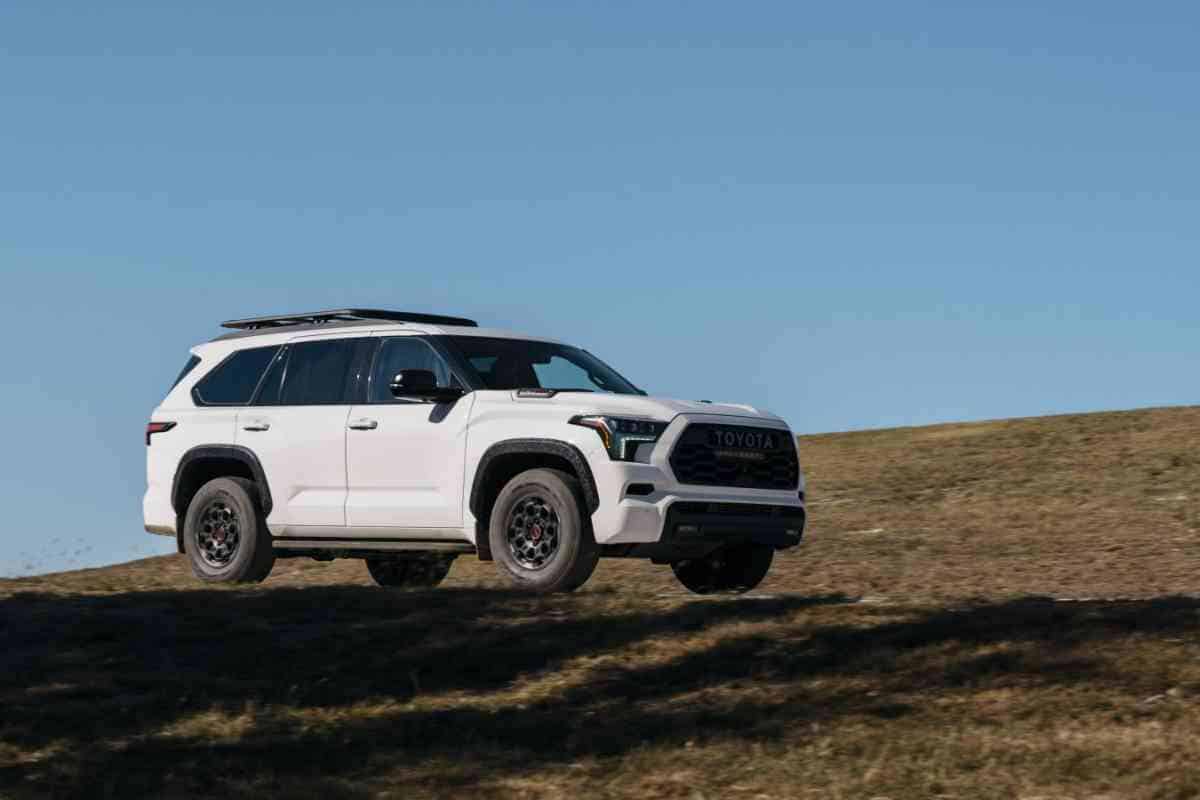
We need to know some facts to answer the question “Does the Toyota Sequoia have a locking differential?”

“Drive Past Myths: Get the Real Deal on Car Buying!”
🚘 Uncover 13 Car Buying Misconceptions with Our FREE Newsletter!
Plus you will get our quick tips, expert advice, and myth-busting insights delivered straight to your inbox.
Subscribe now and make informed decisions without the detours.
“Experts Hate This! Learn the Car Buying Secrets They Don’t Want You to Know. Free Subscription!”
The first thing that we need to do to understand what the Toyota Sequoia’s differential has to offer is to learn what a mechanical differential is. A mechanical differential is one of the fundamental parts of how a car’s wheels turn.
The engine, which can produce only a limited amount of turning power (called torque) must rotate at least two wheels in order for the car to move. A differential operates to control the rate that these wheels turn to give the car the power and efficiency it needs for different situations.
A mechanical differential can be described as a gearbox placed between the powered wheels on a car. Some cars, like the Toyota Sequoia, are able to power the turning of all 4 wheels on their car.
Thus, it has two differentials, one between the front wheels and one between the back wheels.
These differentials have several gears which connect with one another to allow opposite wheels on the car to spin faster than one another. This is done by mounting one gear on another gear in such a way that the second gear is perpendicular to the first.
By setting these two gears on different, yet connected, axles, the axle shafts that the wheels spin on can take the same power from the engine and spin at their own rates.
Now, you might be wondering why a device such as this would be necessary. The answer is that differentials exist to reduce damage to the tires. For example, when you are performing a turn, the wheels on the car that are on the outside of the turn are being made to travel a further distance.
If these wheels were connected on the same axle, the inside wheel would be forced to turn just as fast, grinding itself into the ground and wasting power.
To avoid this, a differential divides the axle that the wheels spin on and uses a combination of gears to let each wheel operate at the appropriate speeds.
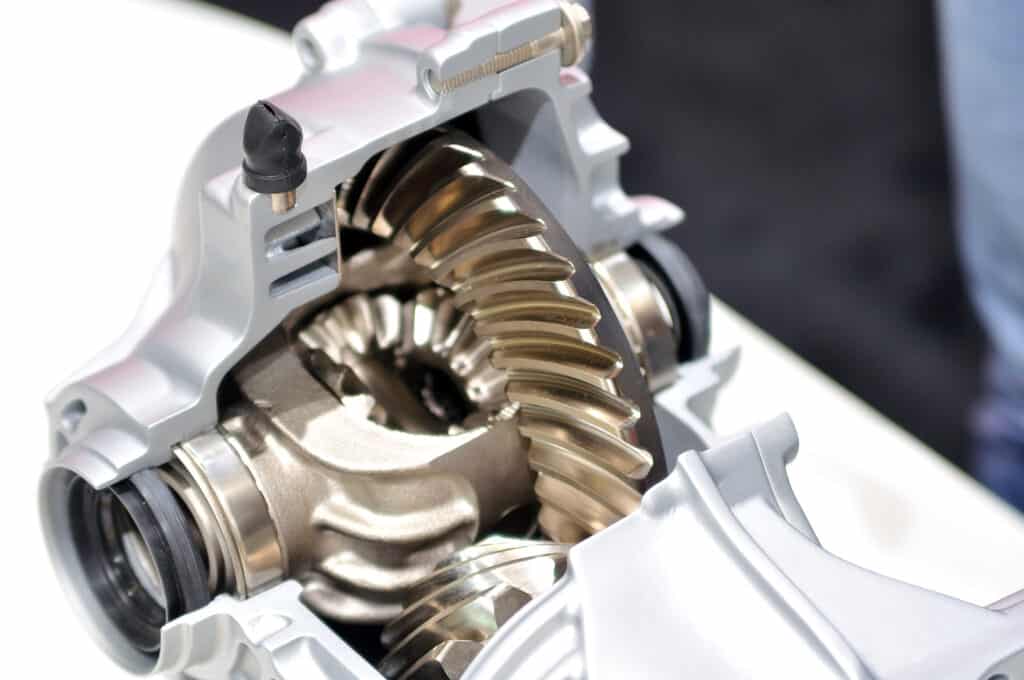
What is a locking differential?
To keep your car prepared for any circumstances, there are a few different kinds of differentials. Understanding them is essential to answer the question “Does the Toyota Sequoia have a locking differential?”
Open Differential
The first kind is an open differential. This type of gear setup connects each wheel to the engine in such a way that they each receive half of the engine’s power.
This makes the car easily manage turns and other smooth situations. However, if each wheel only has access to half of the power, the car could have trouble in off-roading situations.
One of the powered wheels could get stuck (trapped on slick ice, sand, or in the air) and the car would only be able to use half of its power to force the car onwards while the other wheel spins away uselessly.
The opposite sort of differential is called a locking differential.
Locking Differential
A car equipped with a locking differential is capable of locking the two wheels on an axle together when in these rough situations. With the axle locked, none of the power in a car is lost.
A car with one of the wheels stuck doesn’t face the problem of half of the engine’s power going to a useless wheel; the wheel with traction has one hundred percent of the car’s torque to take advantage of.
However, most of the time the locking differential would not be used because it would cause problems for the car while on the road.
A locking differential is more common full sized trucks. The locking differential is also known as a locker, or a welded differential.
The key difference between open and limited, is that the locking differential is sometimes selectable – and it keeps all wheels spinning at the same speed.
This is good, especially on difficult terrain or off-road, where one or more wheel might be off the road (or dirt path) at some point – you’ll want all the wheels going to provide enough traction and torque to go forward, or backward.
Also note that most vehicles don’t have a full time locking differential, and some provide the differential electronically so it knows when to turn off and on.
Limited Slip Differential
To get the best of both worlds, the Toyota Sequoia comes with what is called a limited-slip differential. This function can be manually switched on by the driver and functions similarly to a locked differential.
The limited-slip differential allocates the majority of power to the wheel that has more traction while still powering the other wheel an appropriate amount.
For example, if one wheel of your car is on a firm, rough surface and the other is on a slick surface (like ice), the engine will give the wheel on the slick surface a small part of the power (enough that the wheel helps to leverage the car’s release) while the rest of the power goes to the wheel with better contact.
Mostly used on sports cars, the limited-slip differential remains an open differential until it loses grip, then turns into a locking differential to allow all the wheels to gain more grip.
This is mostly applicable in scenarios where you intend to take off fast with rear-wheel drive. The idea here is to get some grip when you need it.
Does The Toyota Sequoia Have A Locking Differential?
Now onto the Toyota Sequoia itself. There are three generations of the Sequioia, and we’ll cover what is happening with all three:
1st generation: 1999-2007
The answer of whether or not the Sequoia from this generation has a locking differential actually depends on the year.
So, does the Toyota Sequoia have a locking differential in the first generation?
From 1999 to 2004, the answer is no, the Sequoia came with a open differential though it did have both 2 wheel drive and 4 wheel drive models.
Toyota gave the Sequoia a facelift and offered several changes from 2005 on. Included in these changes were a Torsen center differential
Torsen literally stands for Torque and “sensing” indicating that the differential was capable of sending when to lock and give all four wheels the same power.
Incidentally, these are also the worst years for the Sequoia.
2nd generation: 2007-2022
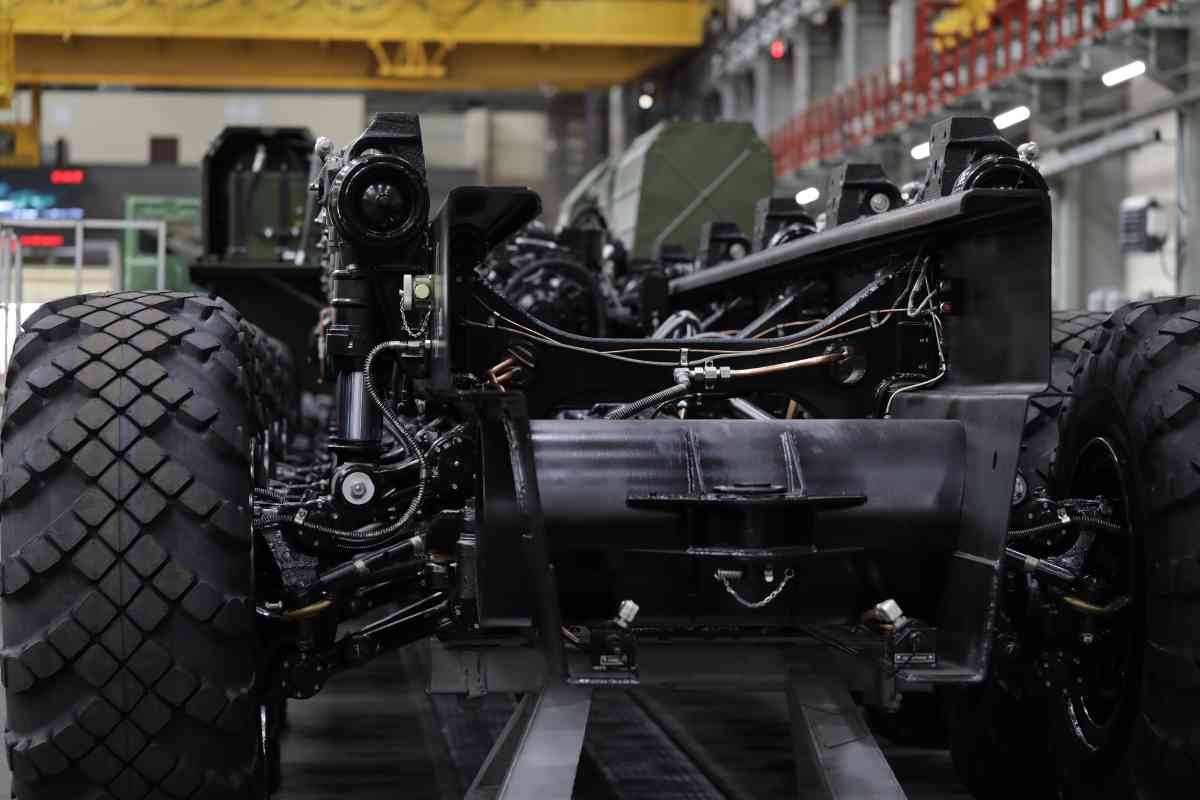
In case you were wondering, yes, 15 years between generations of a vehicle is a bit of a long time.
You can also tell that to Sequoia lovers who were just waiting for a facelift of the vehicle with some updates!
Part of that wait included the answer to the question: “Does the Toyota Sequoia have a locking differential?”
The second generation Toyota Sequoia does have a locking differential available – and again, it is smart enough to sense when to kick in – even when you don’t notice.
Another substantial upgrade to this generation was the use of an independent rear suspension and double wishbones with coiled springs.
In other words, and as you might suspect as vehicles change and adapt – the 2nd generation is more comfortable for most people than the first.
3rd Generation: 2023
The newest edition of the Sequoia adds a few more features in addition to a locking differential. Like many vehicles in its class and abilities, you have a selectable locking differential in addition to a sensing differential.
You also get multi-terrain select and Downhill Assist Control – which is another aspect of generally having a locking differential.
These are well placed and easily described so you aren’t fidgeting about your steering wheel.
More about the Toyota Sequoia’s locking differential
Much of the need for a locking differential comes from the need to control your Sequoia in specific situations.
Amongst other vehicles that have the potential for going off-road and even going through rocks and run, there is certainly a need to overcome the limitations an open differential that decides for you which wheels need power.
A person driving their Sequoia off the beaten track could get stuck in a situation where one wheel on either side is no longer making contact with anything with traction – and could literally be hanging in the air.
Especially in a two-wheel-drive vehicle, this isn’t very helpful because the wheels themselves can’t get enough power or traction to go.
With a locking differential, you tell the vehicle to supply the same amount of maximum power to all wheels at the same time.
This overcomes some of the limits of an open or limited slip differential where the vehicle is doing a bit too much decision-making and might not you are hanging between two rocks.
Since you can’t pick just one wheel to deliver power to, you should ensure the locking differential is on so know that power is being delivered to all wheels in a way that helps you move.
Is the Sequoia an off-roading vehicle?
When people ask “does the Toyota Sequoia have a locking differential”, they also inquire whether it’s good off-road.
Let’s be honest here: A Sequoia is kind of an off-roading vehicle. Toyota designed vehicles like the 2023 Sequoia for comfort and power.
They also gave it an aggressive exterior not common on full size SUVS in an effort to enhance its off-roading appearance.
The new 2023 Toyota Sequoia has some serious off-road options though. They’ve added a solid rear axle, rear remote reservoir shocks and FOX internal bypass coil-overs in the TRD Pro edition.
In addition, you get a small lift of 9.1 inches to avoid getting stuck on rocks and other large objects you might need to clear.
While the differential is also helpful, the Sequoia is smarter than years past.
Crawl Control is like cruise control for low speeds – which is great for driving across mud or rocks and needing to keep constant power on the pedal when there is a risk of slowing down because you need to turn the steering wheel or something else.
One small disadvantage I feel the Sequoia has for off-roading is its size. For serious off-roading, the Sequoia is bigger than most Jeeps – and longer especially when a third row seat.
Of course, the third row seat is also an advantage if you have kids or young adults – which a typical 2 row Jeep isn’t great with.
If you do need a larger SUV that drives a bit like a truck, has a locking differential, and doesn’t have a truck bed, the Sequois might make an excellent choice.
Can I change the differential on a vehicle?
Technically you can, if you know a lot about gearboxes and the suspension. A locked differential is also sometimes called a welded differential because do it yourselfers have attempted to weld parts together to force vehicles to act like they have a locked differential.
We won’t go into much detail on the basis that we’ve also heard that sometimes these jobs can go poorly and cause larger problems down the road.
Let’s say that the result could be having wheels turning at different speeds at the same time and breaking gears in the vehicle.
When should I use the locking differential on my Toyota Sequoia?
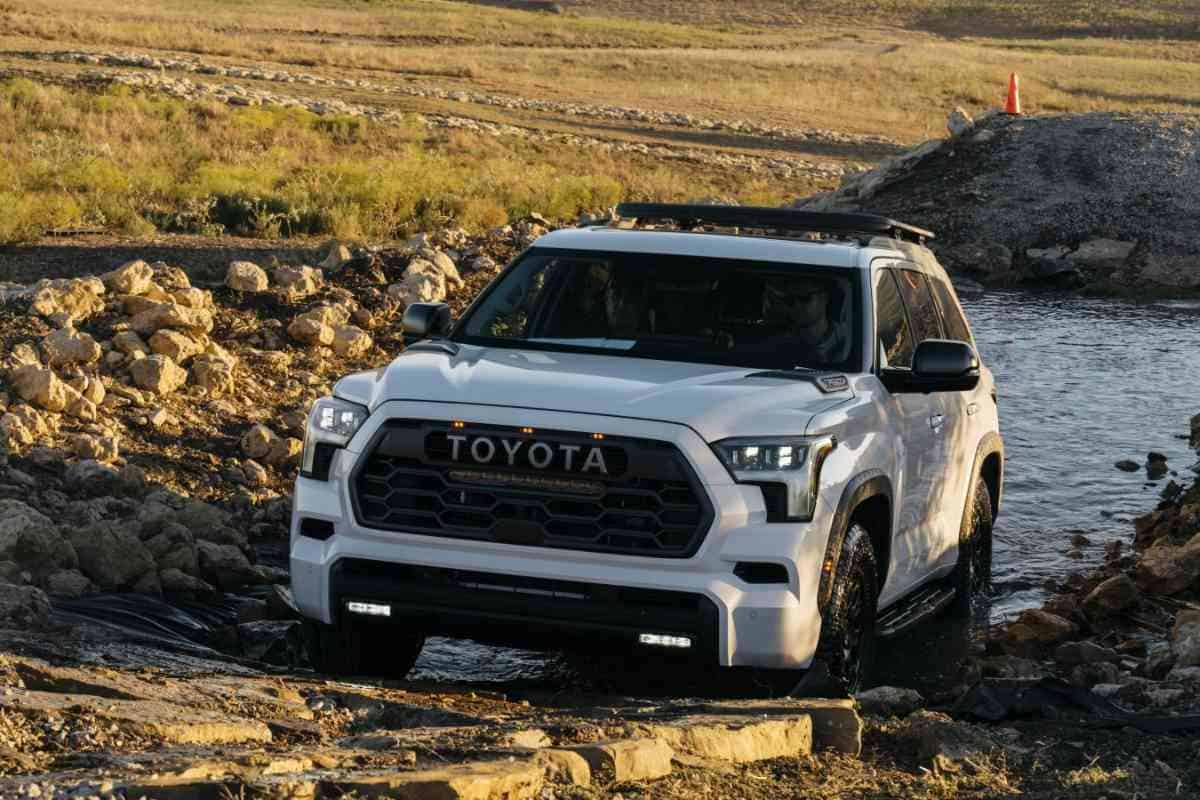
First, know that generally speaking, the Toyota Sequoia knows when to engage the locking differential.
It’s also not something you need to use at all at highway speeds on clear roads – and you should in fact limit its use to under 25 miles per hour.
The locking differential is more useful when your Sequoia is on uneven road – or has tires that are off the ground.
These are sometimes rather unique scenarios – and you might even need a spotter to know if your tires are offf the ground.
If you are driving to a camp site that is off the beaten path, a locking differential can certainly be helpful if the roads are uneven due to snow, construction, or mud.
In this sense, we would generally trust the Sequoia to reach “remote” places responsibly simply because it has the ability to apply power to all wheels equally when needed.
We would be far more nervous about headed out to a remote camp site on a muddy way with a vehicle without aggressive tires and an open differential, simply because the vehicle could easily get stuck.
Does the Toyota Sequoia have a locking differential In 2WD Versions?
No. While trucks can have a locking differential, the Sequoia is not one. Also, consider that not all Sequoias come with a locking differential. Ask your salesperson and consider looking at the build sheet to make sure.
Another place to look is within the cabin of the vehicle, near the driver, for a switch that allows for locking and unlocking.
How do I use a locking differential on my Sequoia?
While generally speaking, your Sequoia should do a good job of locking the differential on its own, you might have to engage it in some scenarios.
In order to engage the locking differential, you’ll want to look for a button that looks like the two axles of the vehicles, and often has the rear axle “X”ed out. To some these might also appear to look like barbells.
An important note: Turn it off when not in use.
You don’t need it going at speeds at 25 miles per hour.
Key Takeaways: Does The Toyota Sequoia Have A Locking Differential?
- Only the first years of Toyota Sequoia lacked an available locking differential. It has been available since 2004
- The locking differential enables the Sequoia to better conquer uneven ground and prevents the vehicle from “taking over” in situations where a wheel or two might be off the ground
- The opposite kind of differential – an open differential, has a smoother ride, but doesn’t do as well off-road and in situations where drivers need more control.
Four-Wheel-Drive
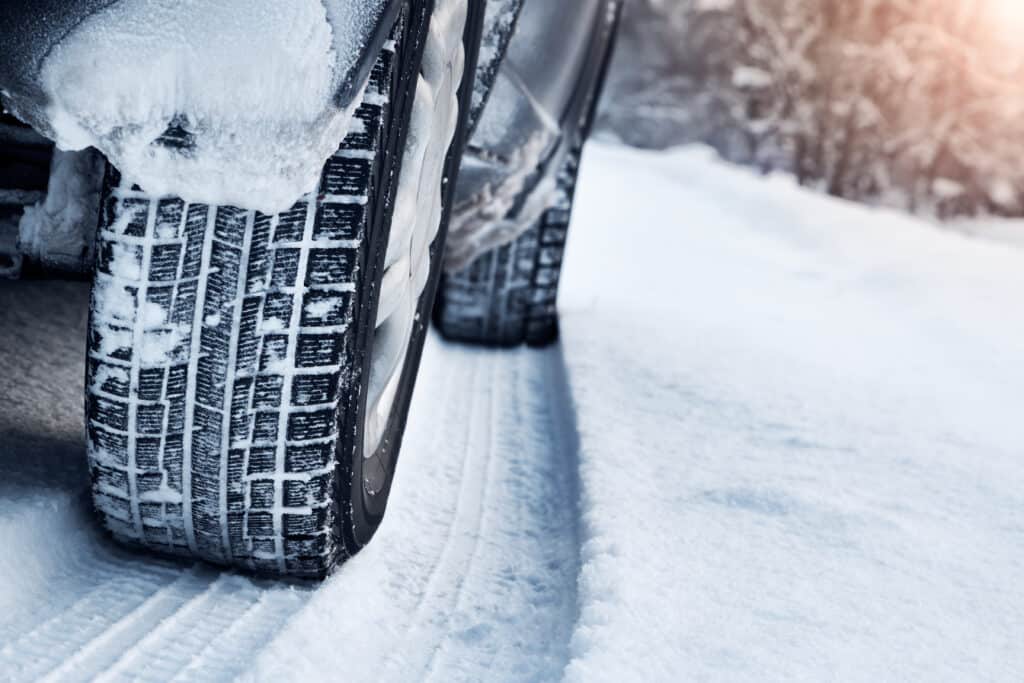
In addition to the limited-slip differential on the Toyota Sequoia, it also has four-wheel drive capability. The car does not use the four-wheel-drive system in every situation, however.
The turning of all four wheels is recommended to be used in rougher circumstances to propel the car through difficult terrain.
Four-wheel drive (abbreviated as 4WD) has a few different settings, including 4Hi and 4Lo. 4Lo is a setting that powers all four wheels of the car with a low and steady amount of torque.
This setting is ideal for hauling a heavy load or ascending inclines, as it gives your car a lot of leverage and hauling power.
The car will move at slower speeds, but the force that it can offer is impressive. It’s similar to pedaling uphill with a bike. You might move more slowly, but you’re generating a lot of power with each wheel rotation.
The other setting, 4Hi, is the setting that has the limited-slip differential engaged. This setting offers a lot more traction and versatility and is best used when traversing rough terrain.
Overall, the Toyota Sequioa is a great SUV that has impressive solutions to all of the problems that a car can face. Whether you are hauling or on a rough patch of ground, the Sequoia’s differential will give you all of the leverage that you need.
